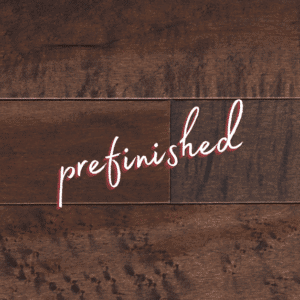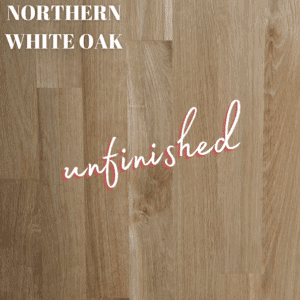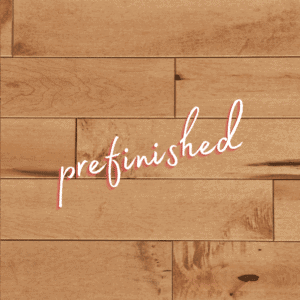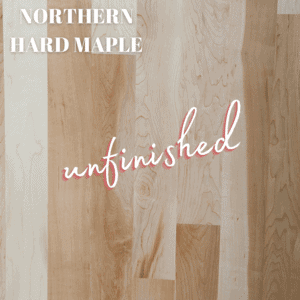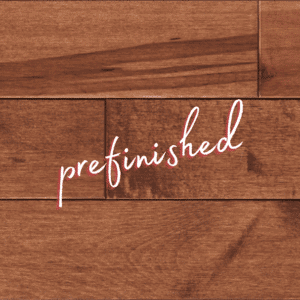As you know, there is a lot to consider when it comes to selecting a new floor. But like us, you love the look of a hardwood floor, and have decided that is the floor of choice for the home you’re building or remodeling. The next question to tackle is the following: should you go unfinished or prefinished floors?
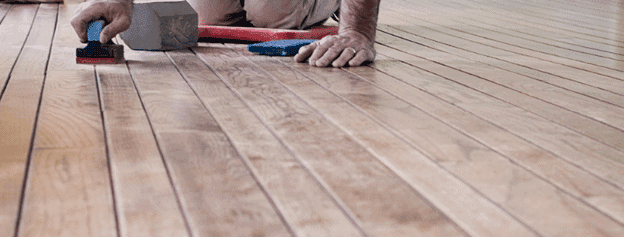
Like most decisions, there pros and cons either way you go. We’ll go over some of things you might want to take into consideration before you commit.
Point Prefinished Floors
Right out of the gate, prefinished floors have a big advantage: they can be installed in one session and you can walk on them immediately afterward. On the other hand, site-finished hardwood requires a bit more attention after an oil-based polyurethane has been applied. You might be looking at days, or even weeks, of waiting for the floor to fully cure before you can put your furniture back in its place. While a water-based polyurethane typically dries more quickly, you could still be looking at a wait before it’s cured.
Point Unfinished Floors
If your space is going to be under construction, or if you’re involved in a large-scale renovation, unfinished might be the way to go. In fact, many contractors prefer working this way, since they will be using the floor right up until the job is complete. This prevents things like scuffs or dropped tools from upsetting customer relations.
Point Prefinished Floors
As stated above, one of the benefits to site-finished flooring is not worrying about the amount of traffic the floor receives during the remodeling. The flip side of that is this: with prefinished floors, you don’t have to worry about things like dust or hair getting caught in the stain as it dries.
Point Site-Finished Floors
When you opt for on-site finished hardwood, there are more choices involved when it comes to finish. If you are uncertain about the color and shade, you have a bit more variety.
Point Prefinished Floors
Prefinished floors have fewer VOCs, or Volatile organic compounds, which have been shown to be carcinogenic. If you go the site-finished route, you’re looking at days of breathing in vapors and polyurethane resins and solvents. While this is more common in the oil-based polyurethanes, some water-based polys produce them as well. With a prefinished wood floor, all the curing takes place somewhere other than in your home.
Point Unfinished Floors
Your prefinished floorboards typically have micro-bevels on all edges, which in turn work to camouflage the minute incongruities that occur between boards of different depths and widths. These discrepancies aren’t present with floors that are finished on-site, as the floor is sanded before it’s treated.
Point Prefinished Floors
While the upfront cost might tell you otherwise, prefinished wood floors tend to be more cost-efficient than site-finished floors. While the dollar amount per square foot is a bit steeper when you’re making the purchase, the cost savings comes in the finish itself. Having your floors finished on-site adds to expenses, and with prefinished, you typically come out ahead.
Prefinished or unfinished, that is the question. If you’re no closer to making your decision, visit your friends at Classic Wood Floors. We’ll help you determine which side of the debate to land on—what makes sense for you, your family, your budget, and your specific building or remodeling project.

